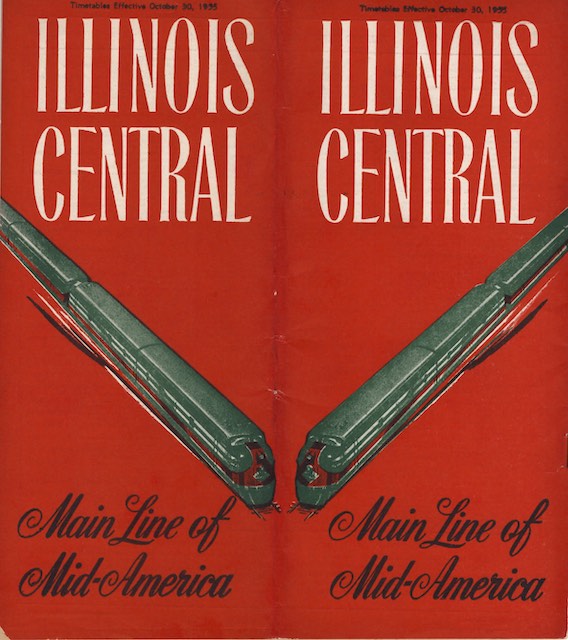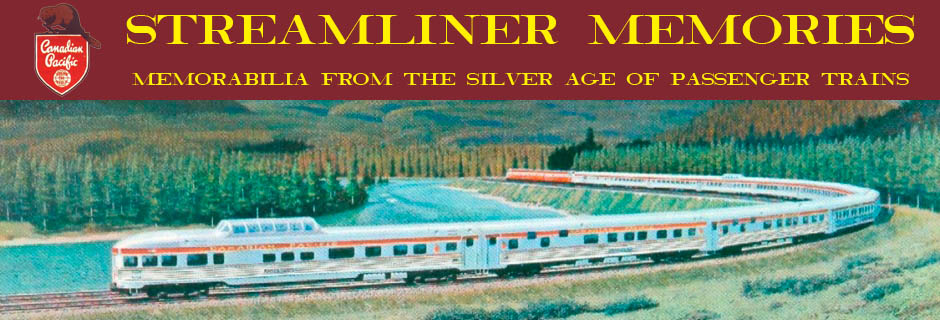When Eisenhower became president, his brother Milton (then president of Penn State University) sent him a 15-page memo arguing that federal policies that discriminated against the railroads — policies devised when railroads were the only effective form of transportation — should be abolished so they could compete against trucks, air, and other modern transports. The president responded by creating a cabinet committee to review all transportation policies. The committee report that was given to the president in December 1954 and released to the public in spring 1955 strongly urged significant deregulation of the railroads.
 Click image to download a 19.8-MB PDF of this timetable contributed by Ellery Goode.
Click image to download a 19.8-MB PDF of this timetable contributed by Ellery Goode.
Page 2 of this timetable is a full-page ad promoting the implementation of this report. The ad doesn’t mention that one of the report’s recommendations was to make it easier for the railroads to abandon passenger service. In fact, that would be about the only recommendation that Congress would approve during the Eisenhower administration; full deregulation would have to wait for the Staggers Act of 1980.
The front cover of this timetable (as the cover shown above is on the back) has a map of United States railroads, emphasizing the IC of course, and a five-paragraph introduction to New Orleans as the “city of charm.” This ad wasn’t very effective as the map says nothing about New Orleans and the five paragraphs say nothing about the map.
Regardless of the ad’s effectiveness, New Orleans was the focal point of Illinois Central passenger service. The timetable shows four trains a day between Chicago and New Orleans, three a day between St. Louis and New Orleans, plus one a day from Cincinnati (via B&O) and Louisville to New Orleans. There were also three trains a day between Chicago and St. Louis and one plus one every third day between Chicago and Birmingham that continued to Florida on other railroads.
Although Illinois Central was primarily a north-south railroad, it also had an east-west component represented by trains from Chicago to Sioux City, Iowa. The east-west line also went to Omaha, but IC’s Omaha route was more than 20 miles longer than the Milwaukee Road and North Western’s, so the Central had dropped out of that passenger market by 1942.

I remember reading in a different timetable there was an advertisement for the abolishment of an outrageous sales tax to travel in 1950s (14-15%). This was a result of a wartime effort to prevent people from moving across the country. I wonder if this deregulation was related to that…